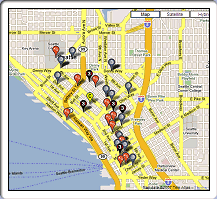Introduction
As 10 Gigabit Ethernet (10GbE) is introduced into networks the physical limitations and properties of optical fiber introduce new challenges for a network designer. Due to the increased data rate, fiber effects, such as dispersion (intermodal, chromatic or polarization), become a factor in the achievable distances of 10GbE links. This leaves the network designer with [...]
Posts tagged as:
10 Gigabit Ethernet
Introduction
Two different testing philosophies have evolved in our communications networks: a "perfection" approach, under which the Device Under Test (DUT) is subjected to signals produced by test equipment whose performance exceeds the DUT’s required specifications and a "worst-case" approach that subjects the DUT to signals that simulate those likely to be encountered in the field.
Traditionally, [...]
Ethernet Transport and its Service Technology
To understand why Ethernet is a viable transport for the WAN, it’s important to note the various technology that surrounds and supports Ethernet.
Figure 1 shows Ethernet’s circle of technology. At the core, Ethernet is supported within fiber, copper, and even wireless media. In addition, bandwidth support for Ethernet can range [...]
By far, the most widely used networking technology in Wide Area Networks (WANs) is SONET/SDH. With the growth of Ethernet now into Metropolitan Area Networks (MANs) there is a growing need to interconnect Ethernet LANs and MANs to these prevalent SONET networks. With the advent of 10 Gigabit Ethernet, the commonality of line rates between [...]
Under the International Standards Organization’s Open Systems Interconnection (OSI) model, Ethernet is fundamentally a Layer 2 protocol. 10 Gigabit Ethernet uses the IEEE 802.3 Ethernet Media Access Control (MAC) protocol, the IEEE 802.3 Ethernet frame format, and the minimum and maximum IEEE 802.3 frame size.
Just as 1000BASE-X and 1000BASE-T (Gigabit Ethernet) remained true to the [...]

